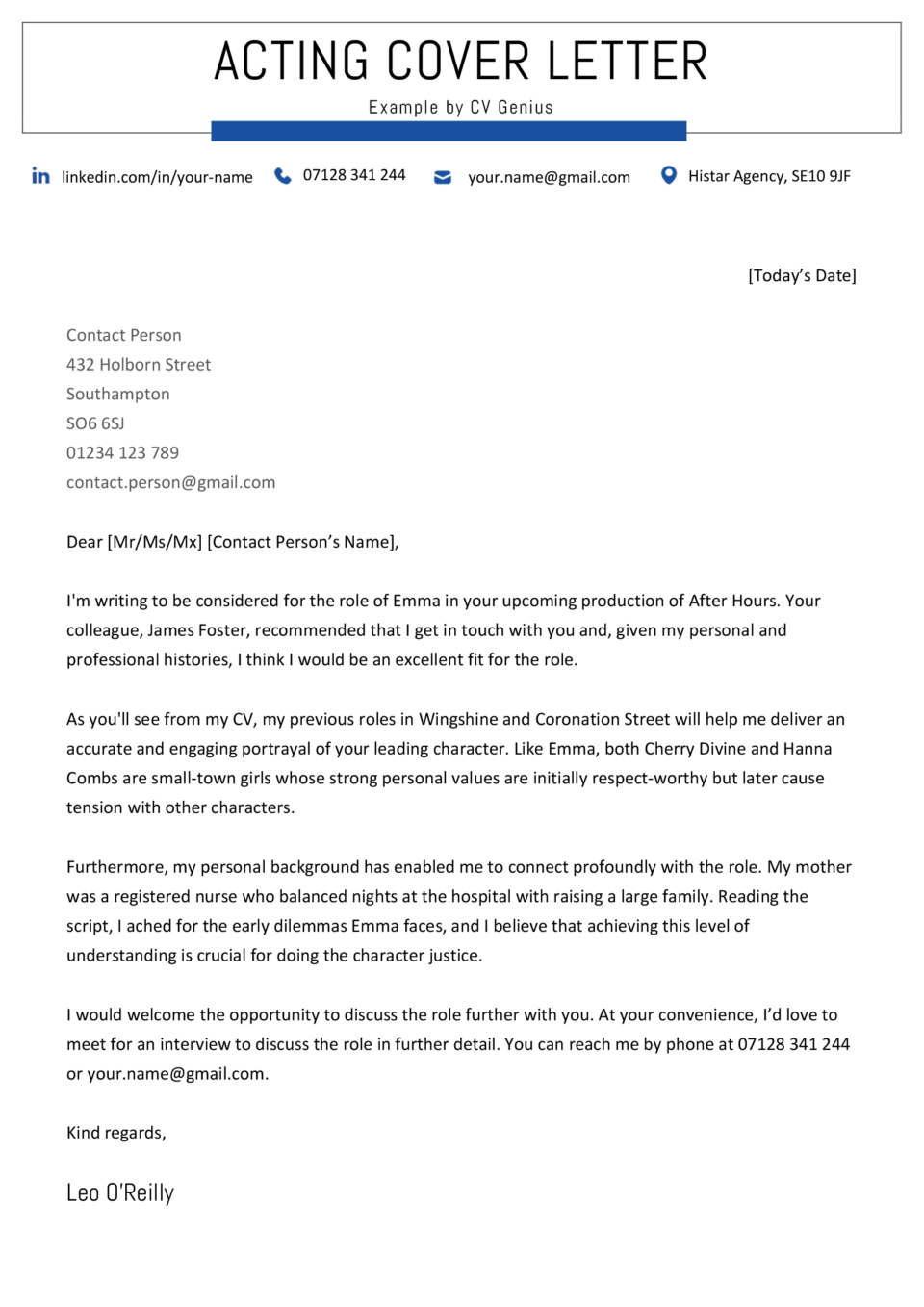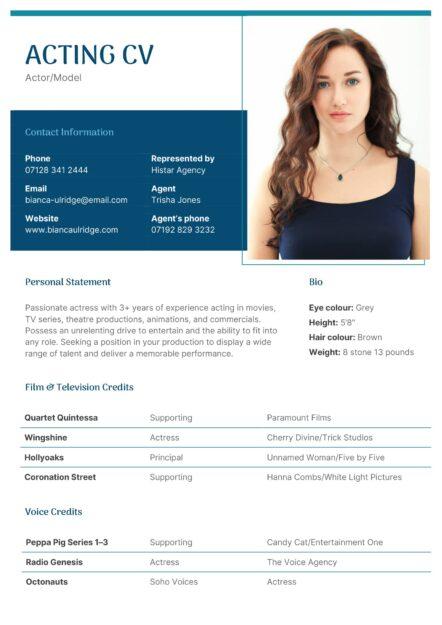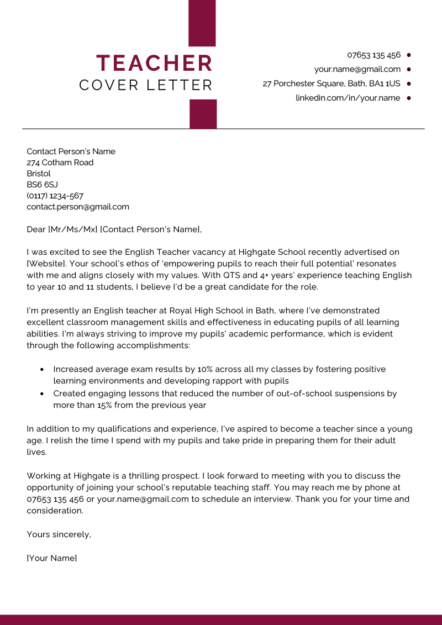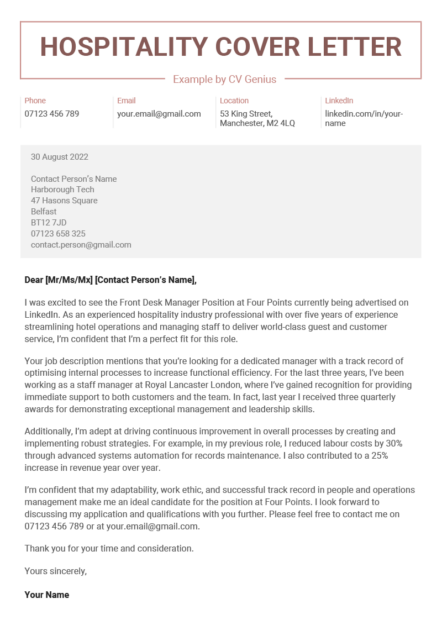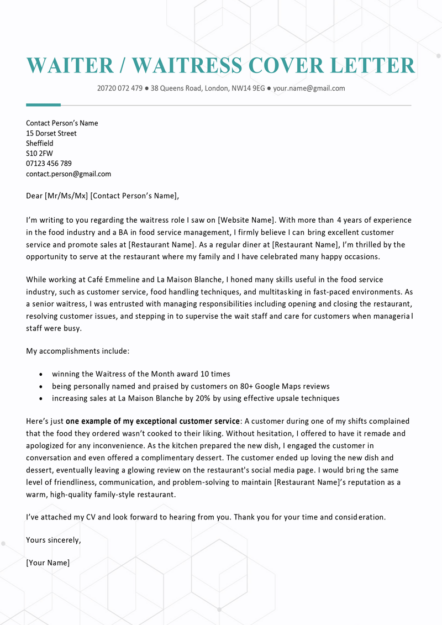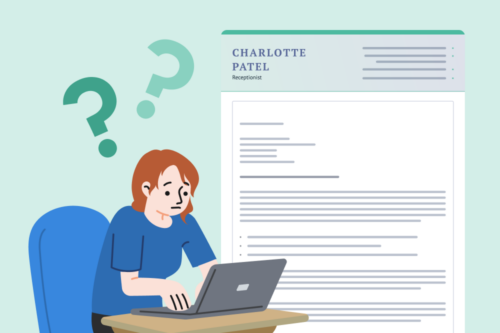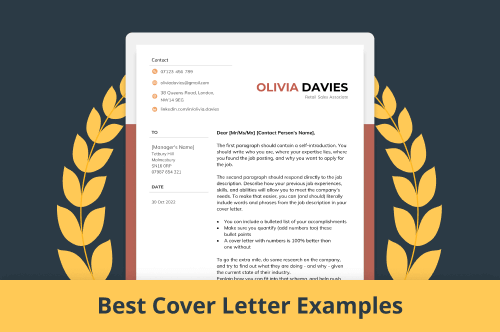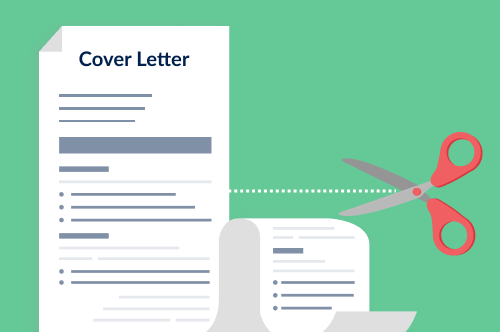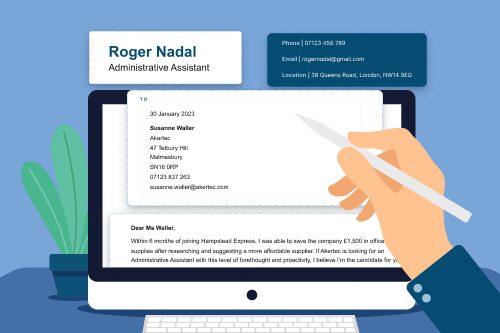Be sure you use the proper cover letter format to make your cover letter readable and professional.
Acting Cover Letter (Text Format)
[Today’s Date]
Contact Person
432 Holborn Street
Southampton
SO6 6SJ
01234 123 789
contact.person@gmail.com
Dear [Mr/Ms/Mx] [Contact Person’s Name],
I’m writing to be considered for the role of Emma in your upcoming production of After Hours. Your colleague, James Foster, recommended that I get in touch with you and, given my personal and professional histories, I think I would be an excellent fit for the role.
As you’ll see from my CV, my previous roles in Wingshine and Coronation Street will help me deliver an accurate and engaging portrayal of your leading character. Like Emma, both Cherry Divine and Hanna Combs are small-town girls whose strong personal values are initially respect-worthy but later cause tension with other characters.
Furthermore, my personal background has enabled me to connect profoundly with the role. My mother was a registered nurse who balanced nights at the hospital with raising a large family. Reading the script, I ached for the early dilemmas Emma faces, and I believe that achieving this level of empathy is crucial for doing the character justice.
I would welcome the opportunity to discuss the role further with you. At your convenience, I’d love to meet for an interview to discuss the role in further detail. You can reach me by phone at 07128 341 244 or your.name@gmail.com.
Kind regards,
[Your Name]
How to Write an Acting Cover Letter
Before you begin writing, make sure you know how to write a cover letter in a way that makes you seem like the best candidate for the job.
The performing arts are notoriously competitive when it comes to job hunting. Even after you make a fantastic CV, you need a strong cover letter to win over the casting director.
An acting cover letter is a brief professional introduction that explains who you are and why you’re interested in a role or agency. It’s your chance to demonstrate that you’re someone who takes your career seriously and offers the promise of a captivating performance if you’re cast for a role.
Here are three acting cover letter tips that’ll help you nail those objectives:
1. Outline your motivations for the role
Don’t just write out your previous acting experience. Your acting cover letter should connect you to the role and explain what motivated you to apply for it.
Some popular reasons for wanting to play a specific role include:
- sharing a similar background to the character
- having experience playing a similar role
- interest in a character’s complexity or importance to the plot
- wanting to explore a new type of character
- an interest in the plot or its significance to viewers
Here’s an example of how you might outline your motivations in your acting cover letter:
When I first read the script for Beyond the Dales, I was immediately drawn to Wilfred. The depth of his emotions and his compassion toward Harvey in spite of their fraught relationship resonated with me on a profound level. Having portrayed a similar conflict in Flight!, I believe I can bring an authentic and heartfelt portrayal of this character to the stage.
2. Give it personality
The casting director wants to get to know you and understand how you would interpret the role if given the part.
So a stiff and formal cover letter won’t be helpful to them.
Write your cover letter in your own words, considering both the recipient and the role you’re applying for.
Usually, directors appreciate a relatively light and conversational tone (provided your grammar, spelling, and structure are tidy):
I’m excited about the possibility of working on Hammersmith Junction and bringing Rebecca to life. The script’s humour has me itching to dive into the character and explore the dynamics with the rest of the cast.
In some cases (e.g., applying for a role with a prestigious theatre company), you can adopt a more formal tone. However, you should still make it clear why you’re pursuing the specific role:
I approach acting as an opportunity to delve deep into the characters I portray. For me, Paola represents a powerful journey of self-discovery, and I’m committed to bringing an authentic and emotionally resonant performance to your production.
3. Sign off with all the essential information
End your cover letter by thanking the casting director for their time and explaining how they can contact you for an interview.
Also, give your email address or phone number. And specify when you’ll be available to speak over the phone if it’s the latter. Repeating this information is all right if you already included it in your cover letter header.
Finally, choose an appropriate sign-off phrase:
Yours Sincerely,
Frederico Santini
Need a little extra help with your cover letter formatting? Try using an online cover letter builder that structures and formats your letter automatically to make a great first impression on the employer.
Other Great CVs & Cover Letters from this Industry:
Cover Letters:
